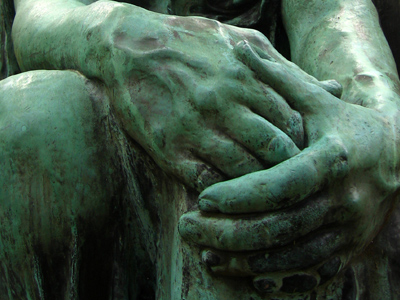
Ask the AI Tutor
Need help with Metals and Non-metals 01? Ask our AI Tutor!
AI Tutor - Lucy
Connecting with Tutor...
Please wait while we establish connection

This statue is made of bronze. Bronze is an alloy. It is composed of copper and tin.
Metals and Non-metals 01
Metals and non-metals behave very differently. KS3 Science explores their properties, reactions, and how they are used in everyday materials and chemical processes.
1 .
The correct way to write the symbol for the metal chromium is .......
Ch
CH
Cr
CR
If the symbol contains two letters, the first is a capital so that immediately rules out the second and the fourth options
2 .
The approximate number of elements we know about today is .......
18
48
118
1018
It is quite possible scientists will discover even more elements
3 .
The list which contains only metals is .......
aluminium, copper, nitrogen
iron, oxygen, hydrogen
iron, silver, aluminium
iron, sulfur, copper
Nitrogen, oxygen, hydrogen and sulfur are all non-metals
4 .
A metal, such as platinum, may be used in jewellery as .......
it is shiny and reactive
it is shiny and unreactive
it is soft and a good conductor of heat
it is soft and cheap
People like jewellery to be shiny and to stay shiny. Unreactive metals like gold and platinum take a long time to tarnish (lose their shine)
5 .
The filament of a light bulb consists of the metal .......
aluminium
iron
silver
tungsten
Tungsten has the highest melting point of all pure metals at 3,422°C
6 .
Bronze is an alloy. It is composed of .......
copper and tin
copper and zinc
iron and zinc
lead and tin
An alloy is a mixture of metals
7 .
A metal which is used in jewellery is .......
lead
silver
tin
tungsten
It is less expensive than gold and platinum and will stay shiny for a long time
8 .
Where are the non-metallic elements found in the periodic table?
In the middle
In the top rows
On the left-hand side
On the right-hand side
Some of the elements either side of the dividing line show properties of both metals and non-metals, for example silicon conducts electricity but cannot be bent or hammered into shape - it shatters
9 .
The most abundant metal in the Earth's crust is .......
aluminium
copper
gold
iron
There is 8.2% aluminium in Earth's crust found as bauxite, aluminium oxide, never as the element
10 .
The list which best describes the properties of metals is .......
strong, good conductor of heat and electricity, solid
strong, poor conductor of heat and electricity, shiny
weak, ductile, good conductor of heat and electricity
weak, low melting point, poor conductor of heat
Some metals conduct heat and electricity better than others
**Unlimited Quizzes Await You! 🚀**
Hey there, quiz champ! 🌟 You've already tackled today's free questions.
Ready for more?
Ready for more?
🔓 Unlock UNLIMITED Quizzes and challenge yourself every day. But that's
not all...
not all...
🔥 As a Subscriber you can join our thrilling "Daily Streak" against other
quizzers. Try to win a coveted spot on our Hall of Fame Page.
quizzers. Try to win a coveted spot on our Hall of Fame Page.
Don't miss out! Join us now and keep the fun rolling. 🎉
**Unlimited Quizzes Await You! 🚀**
Hey there, quiz champ! 🌟 You've already tackled today's free questions. Ready for more?
🔓 Unlock UNLIMITED Quizzes and challenge yourself every day. But that's not all...
🔥 As a Subscriber you can join our thrilling "Daily Streak" against other quizzers. Try to win a coveted spot on our Hall of Fame Page.
Don't miss out! Join us now and keep the fun rolling. 🎉






